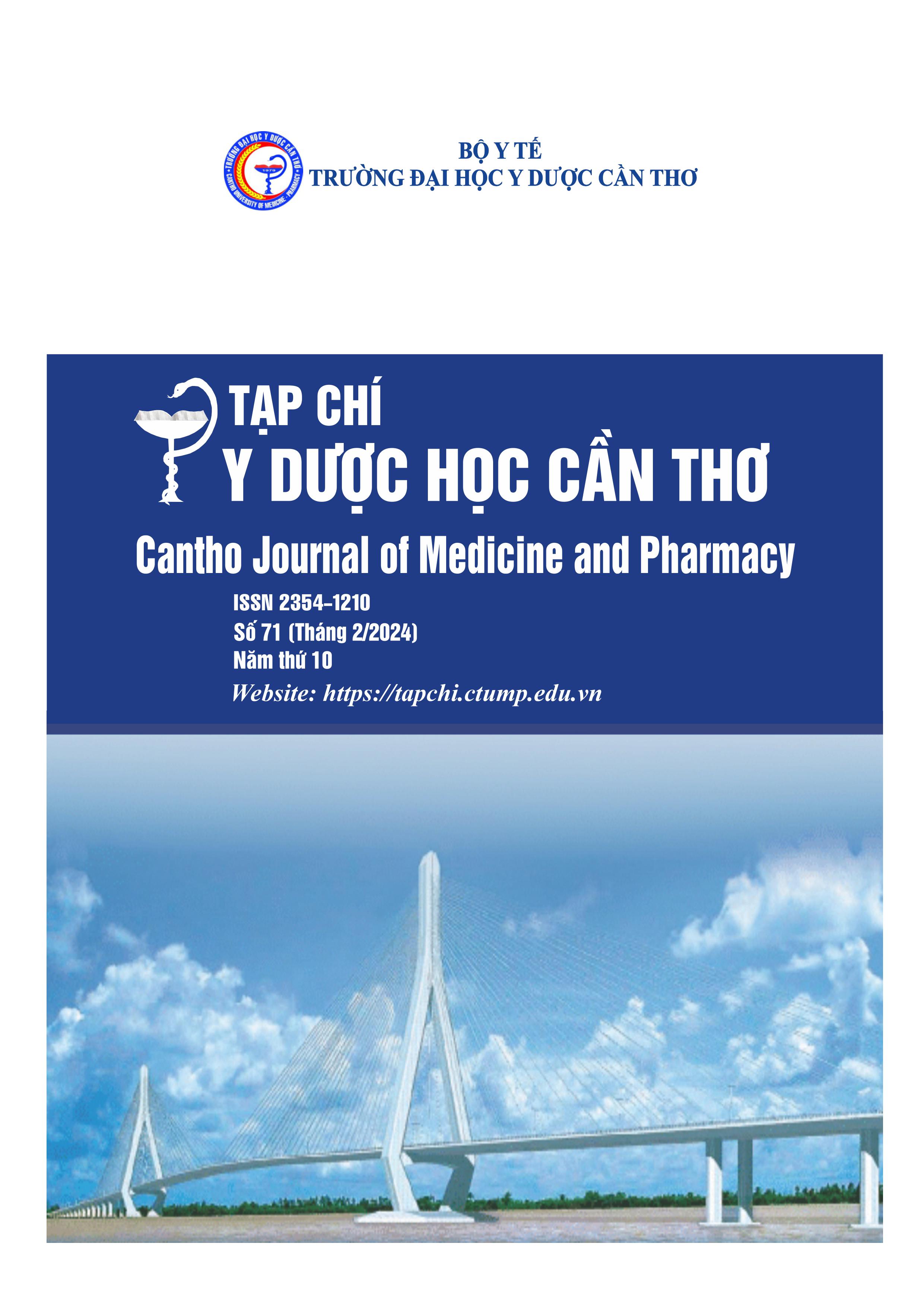EVALUATING THE EFFECTIVENESS OF WASHING AND DRYING PROCESSES IN REDUCING MICROBIAL CONTAMINATION ON MEDICAL TEXTILES AT CAN THO UNIVERSITY OF MEDICINE AND PHARMACY HOSPITAL
Main Article Content
Abstract
Background: The processing of medical textiles before reuse plays a crucial role in controlling and interrupting the transmission chain of hospital-acquired pathogens. Evaluating the effectiveness of the washing and drying process in reducing microbial contamination on medical textiles is of practical significance, contributing to the reduction of hospital-acquired infections. Objectives: 1) To determine the distribution of microorganisms on regular textiles and surgical textiles currently in use at Can Tho University of Medicine and Pharmacy Hospital; 2) To evaluate the intervention effectiveness of the washing and drying process in reducing the level of bacterial contamination on medical textiles. Materials and methods: Fifty samples of medical textiles, including regular textiles and surgical textiles, were collected at three stages: pre-washing, post-washing, and post-drying. The samples were cultured, isolated, and bacteria were identified. Results: After use, 100% of the medical textile samples showed the presence of microorganisms, with Staphylococcus species being the most prevalent in both regular textiles (17.9%) and surgical textiles (23.3%). The lowest prevalence was found in Klebsiella pneumoniae (3.6%) for regular textiles and Pseudomonas aeruginosa (3.3%) for surgical textiles. Washing alone, using temperature and chemicals, was unable to eliminate microorganisms. However, the combination of washing and drying processes helped in the complete removal of microorganisms. Conclusions: The washing and drying process implemented at Can Tho University of Medicine and Pharmacy Hospital successfully eliminated 100% of the adherent microorganisms on the textiles after use (p < 0.05).
Article Details
Keywords
Medical textiles, microorganisms, washing, drying, hospital-acquired infections
References
2. Fijan S., and Turk S.Š. Hospital textiles, are they a possible vehicle for healthcare-associated infections? International journal of environmental research and public health. 2012. 9(9), 3330– 3343. https://doi.org/10.3390/ijerph9093330.
3. Nguyễn Xuân Thiêm, Tống Thị Thảo và Nguyễn Hữu Thắng. Thực trạng nhiễm khuẩn bệnh viện và một số yếu tố liên quan tại Bệnh viện Đa khoa Hà Đông năm 2020. Tạp chí Nghiên cứu Y học. 2022. 152(4), 179-185.
4. Cruz-López F., Martínez-Meléndez A., and Garza-González E. How Does Hospital Microbiota Contribute to Healthcare-Associated Infections? Microorganisms. 2023. 11(1), 192. https://doi.org/10.3390/microorganisms11010192.
5. Tarrant J., Jenkins R.O., and Laird K.T. From ward to washer: The survival of Clostridium difficile spores on hospital bed sheets through a commercial UK NHS healthcare laundry process. Infection control and hospital epidemiology. 2018. 39(12), 1406–1411. https://doi.org/10.1017/ice.2018.255.
6. Owen L., and Laird K. The role of textiles as fomites in the healthcare environment: a review of the infection control risk. PeerJ. 2020. 8, e9790. https://doi.org/10.7717/peerj.9790.
7. Abney S.E., Ijaz M.K., McKinney J., and Gerba C.P. Laundry Hygiene and Odor Control: State of the Science. Applied and environmental microbiology. 2021. 87(14), e0300220. https://doi.org/10.1128/AEM.03002-20.
8. Kampf G. How long can nosocomial pathogens survive on textiles? A systematic review. GMS hygiene and infection control. 2020. 15, Doc10. https://doi.org/10.3205/dgkh000345.
9. Bockmühl D.P., Schages J., and Rehberg L. Laundry and textile hygiene in healthcare and beyond. Microbial cell. 2019. 6(7), 299–306. https://doi.org/10.15698/mic2019.07.682.
10. Glowicz J., Benowitz I., Arduino M.J., Li R., Wu K., et al. Keeping health care linens clean: Underrecognized hazards and critical control points to avoid contamination of laundered health care textiles. American journal of infection control. 2022. 50(10), 1178-1181. https://doi.org/10.1016/j.ajic.2022.06.026.


